Abstract
The enveloped bacteriophage φ6 has been shown to be an interesting model system for the study of chemical agents that might have specific antiviral effects against lipid-containing mammalian viruses. In this report, we describe two types of antiviral activity exhibited by several fatty acids against bacteriophage φ6. Oleic acid (18:1) and palmitoleic acid (16:1) were potent inactivators of the virus. Treatment with either fatty acid at 50 μg/ml at 25 or 0°C for 30 min reduced the virus titer to about 0.1% of the initial titer. Oleic acid at a concentration as low as 3 μg/ml (∼10−2 mM) reduced the virus titer to <1% of the initial titer within 30 min. Ultracentrifugation analyses of 14C-amino acid- and 32P-labeled virus treated with oleic acid indicated that the virion is largely disassembled by the treatment. Myristic acid (14:0) and palmitic acid (16:0) did not inactivate φ6 at 50 μg/ml, but nevertheless did prevent φ6 plaque production. Single-step virus growth experiments in which fatty acid was added at various times before or after infection indicated that it was an early stage of the φ6 replication cycle that was inhibited by the presence of myristic acid and that the inhibition occurred only if the myristic acid concentration in the extracellular growth medium was ≳10 μg/ml. φ6 could attach to its host cell in the presence of myristic acid at 50 μg/ml. We conclude that the fatty acids that prevent φ6 replication probably do so by interfering with the entry of the viral genome into the host cell.
Full text
PDF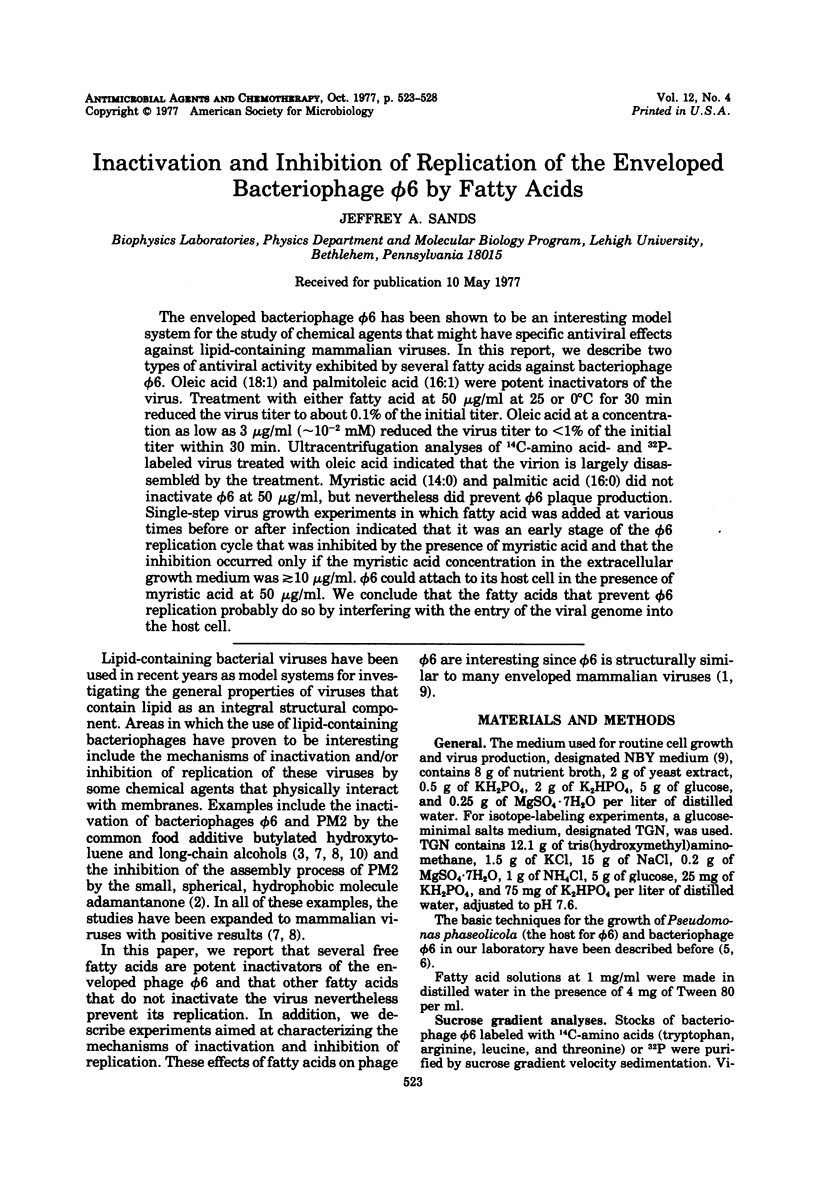
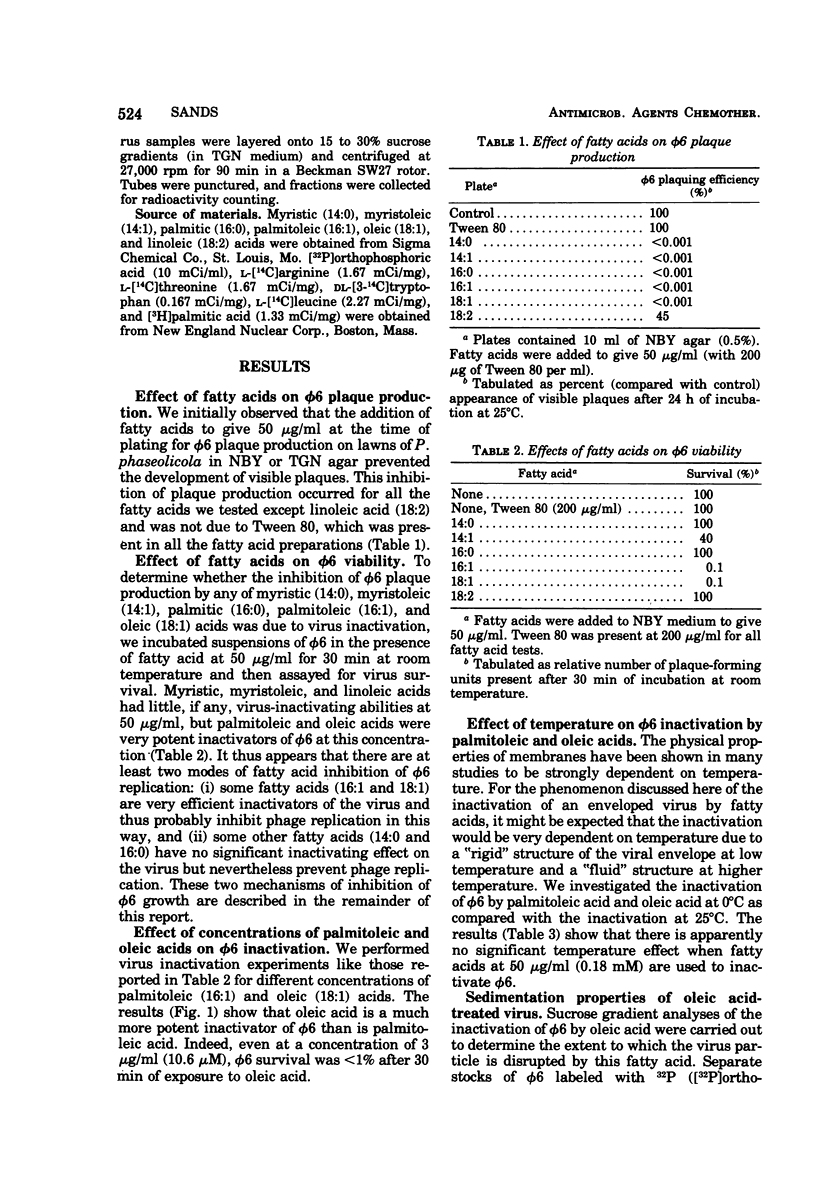
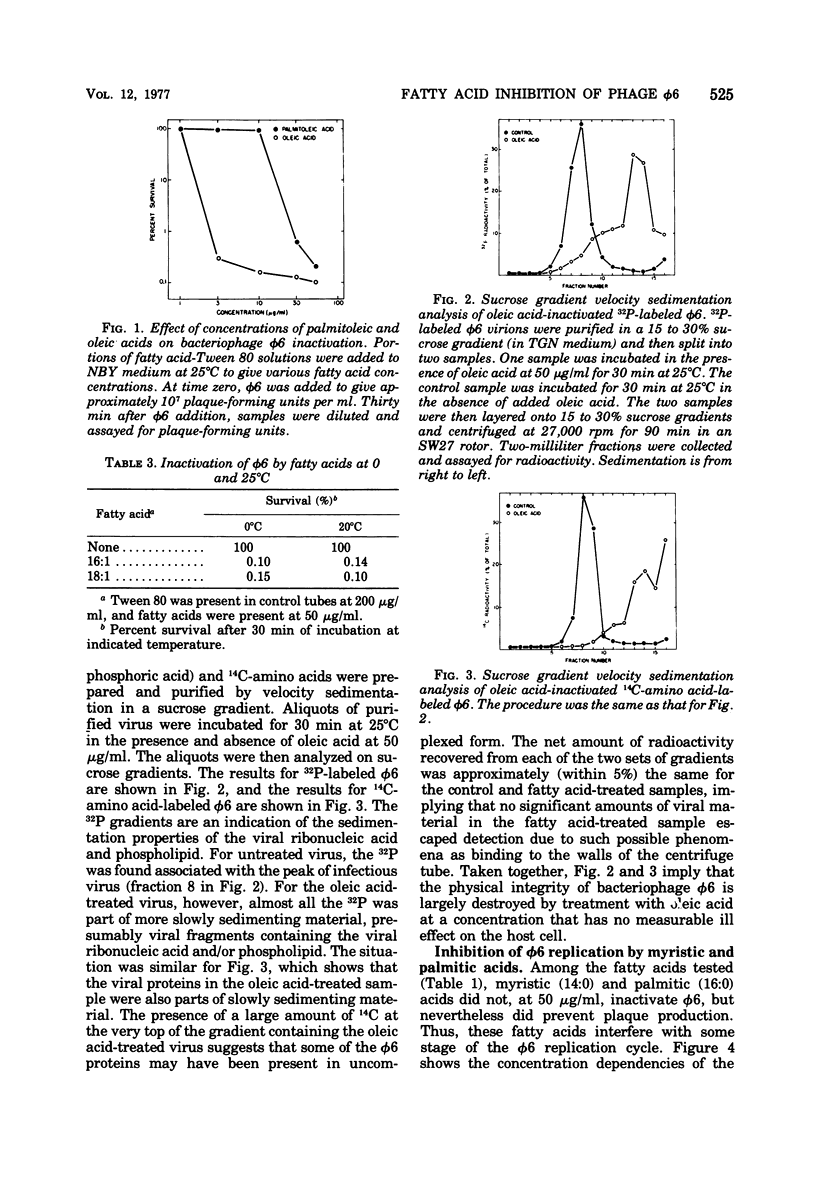

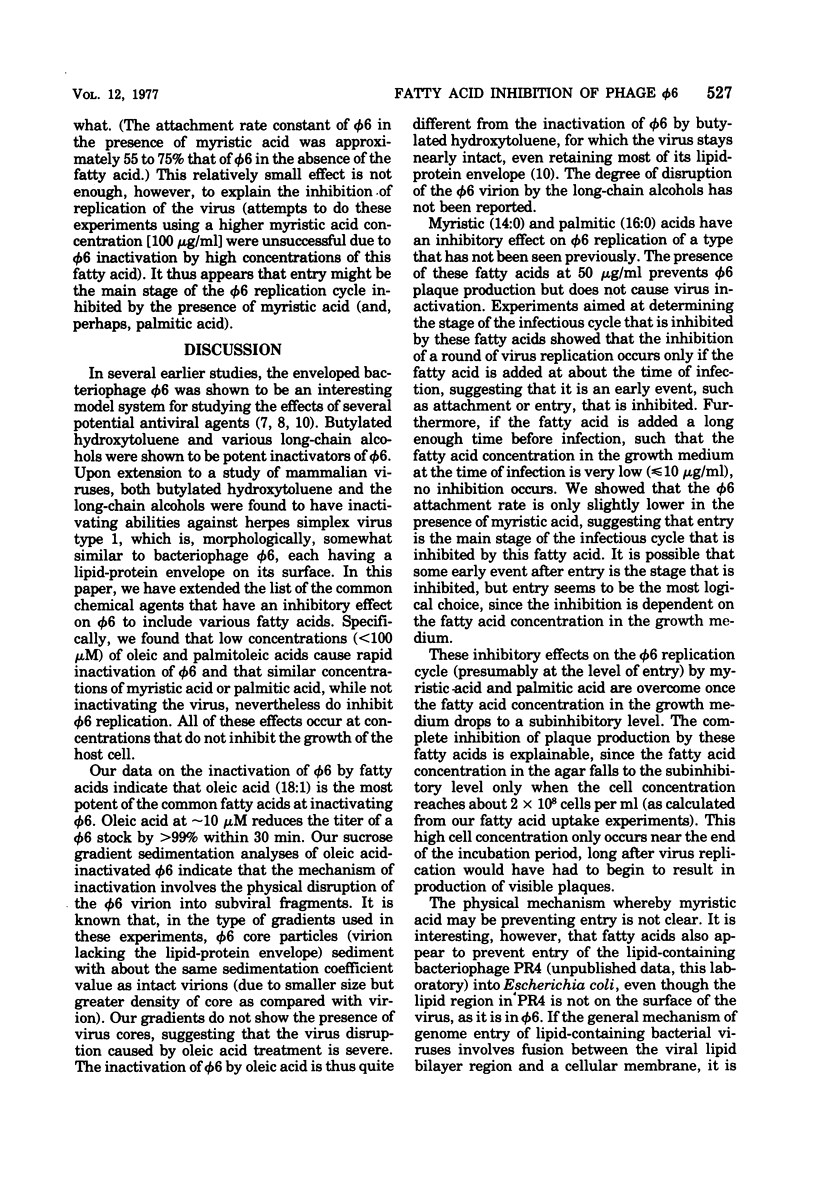
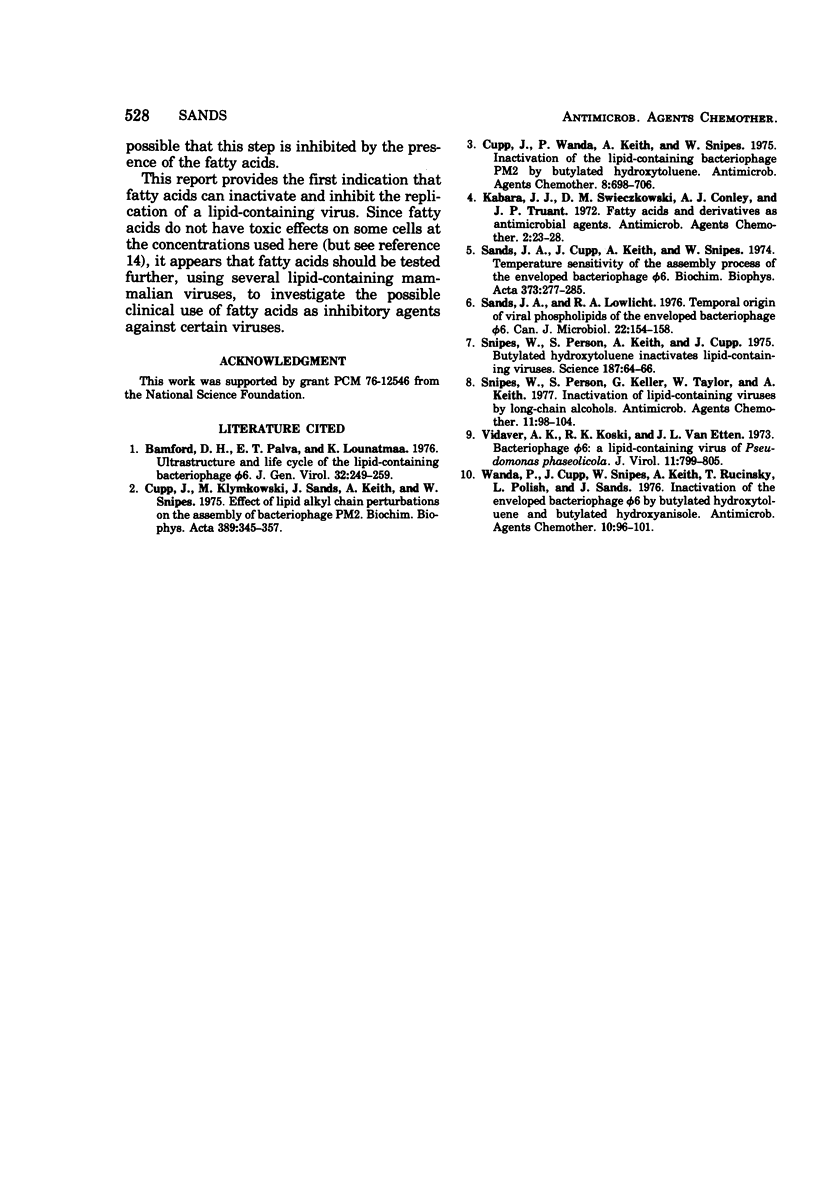
Selected References
These references are in PubMed. This may not be the complete list of references from this article.
- Bamford D. H., Palva E. T., Lounatmaa K. Ultrastructure and life cycle of the lipid-containing bacteriophage phi 6. J Gen Virol. 1976 Aug;32(2):249–259. doi: 10.1099/0022-1317-32-2-249. [DOI] [PubMed] [Google Scholar]
- Cupp J., Klymkowski M., Sands J., Keith A., Snipes W. Effect of lipid alkyl chain perturbations on the assembly of bacteriophage PM2. Biochim Biophys Acta. 1975 May 6;389(2):345–357. doi: 10.1016/0005-2736(75)90327-2. [DOI] [PubMed] [Google Scholar]
- Cupp J., Wanda P., Keith A., Snipes W. Inactivation of the lipid-containing bacteriophage PM2 by butylate hydroxytoluene. Antimicrob Agents Chemother. 1975 Dec;8(6):698–706. doi: 10.1128/aac.8.6.698. [DOI] [PMC free article] [PubMed] [Google Scholar]
- Kabara J. J., Swieczkowski D. M., Conley A. J., Truant J. P. Fatty acids and derivatives as antimicrobial agents. Antimicrob Agents Chemother. 1972 Jul;2(1):23–28. doi: 10.1128/aac.2.1.23. [DOI] [PMC free article] [PubMed] [Google Scholar]
- Sands J. A., Cupp J., Keith A., Snipes W. Temperature sensitivity of the assembly process of the enveloped bacteriophage phi6. Biochim Biophys Acta. 1974 Dec 10;373(2):277–285. doi: 10.1016/0005-2736(74)90151-5. [DOI] [PubMed] [Google Scholar]
- Sands J. A., Lowlicht R. A. Temporal origin of viral phospholipids of the enveloped bacteriophage phi 6. Can J Microbiol. 1976 Feb;22(2):154–158. doi: 10.1139/m76-021. [DOI] [PubMed] [Google Scholar]
- Snipes W., Person S., Keith A., Cupp J. Butylated hydroxytoluene inactivated lipid-containing viruses. Science. 1975 Apr 4;188(4183):64–66. doi: 10.1126/science.163494. [DOI] [PubMed] [Google Scholar]
- Snipes W., Person S., Keller G., Taylor W., Keith A. Inactivation of lipid-containing viruses by long-chain alcohols. Antimicrob Agents Chemother. 1977 Jan;11(1):98–104. doi: 10.1128/aac.11.1.98. [DOI] [PMC free article] [PubMed] [Google Scholar]
- Vidaver A. K., Koski R. K., Van Etten J. L. Bacteriophage phi6: a Lipid-Containing Virus of Pseudomonas phaseolicola. J Virol. 1973 May;11(5):799–805. doi: 10.1128/jvi.11.5.799-805.1973. [DOI] [PMC free article] [PubMed] [Google Scholar]
- Wanda P., Cupp J., Snipes W., Deith A., Rucinsky T., Polish L., Sands J. Inactivation of the enveloped bacteriophage phi6 by butylated hydroxytoluene and butylated hydroxyanisole. Antimicrob Agents Chemother. 1976 Jul;10(1):96–101. doi: 10.1128/aac.10.1.96. [DOI] [PMC free article] [PubMed] [Google Scholar]


